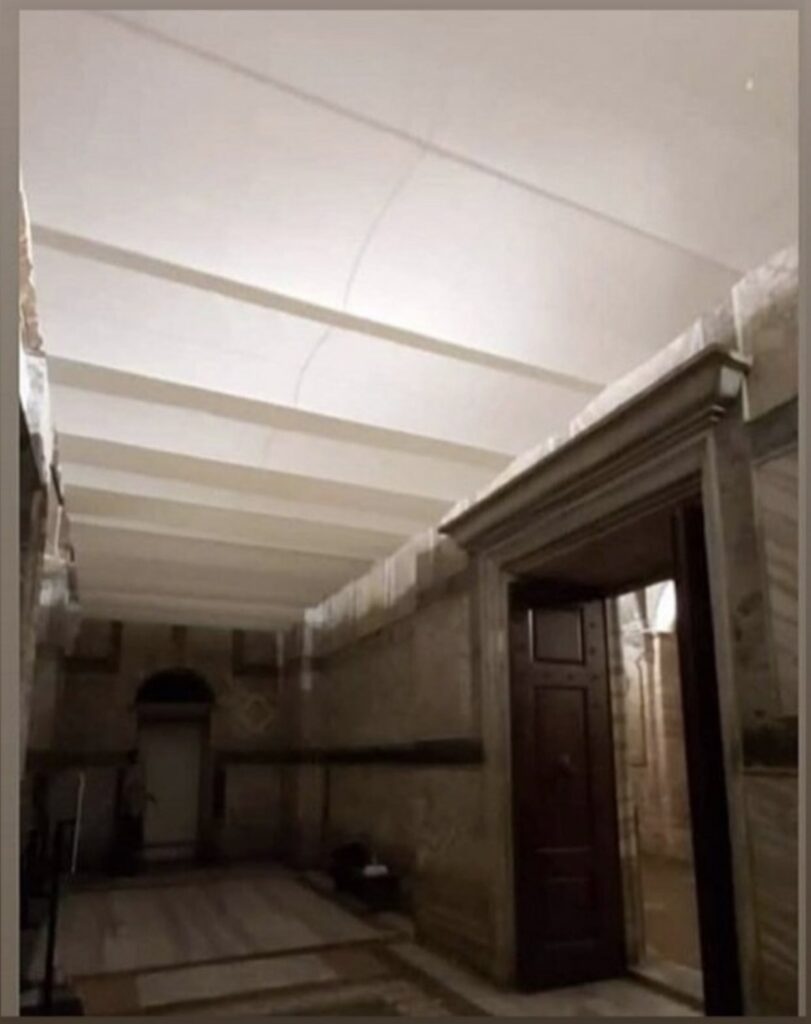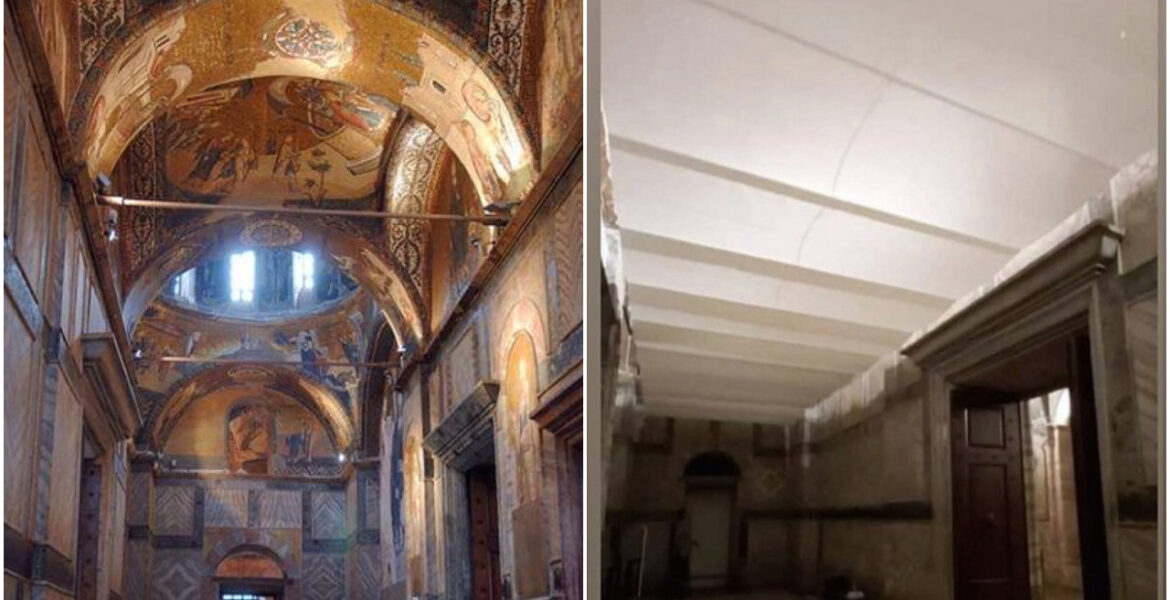

Turkish authorities have covered priceless Byzantine frescoes and iconography at the former Chora Church, considered one of the most significant collections of such art in the world.
Chora was one of the first churches to be looted when the Ottomans conquered the city in 1453. Apparently the icon of the Virgin Hodegetria, which was stored to Chora in 1453, was cut into pieces by Ottoman soldiers who entered the city through the Gate of Adrianople. Chora was converted into a mosque during the reign of Bayezid II by the grand vizier, Atik Ali Pasha before 1511, when it was known as Kariye (the Arabic translation of Chora). At this time, mihrab was added, while its belfry was removed and replaced by a minaret. The mosaics and frescoes were partially covered with plaster around the 17th or 18th century.
Also known as the Church of the Holy Savior, authorities converted the UNESCO World Heritage site into a mosque in August and will open its doors for Muslim prayers on October 30 2020.
At the time of its conversion— instigated by Turkish PM Erdogan which followed the similar conversion of Hagia Sophia, Greece’s President Katerina Sakellaropoulou called the move “symbolic violence” and called Erdogan’s move “an act dictated by political arrogance, cultural insecurity, religious intolerance that condemns a treasure of Christian art and cultural nobility to obscurity.”
Turkish Media and government officials were invited to tour the facility and were shown the newly installed automated screens that have been installed to cover the priceless frescoes and iconography.


